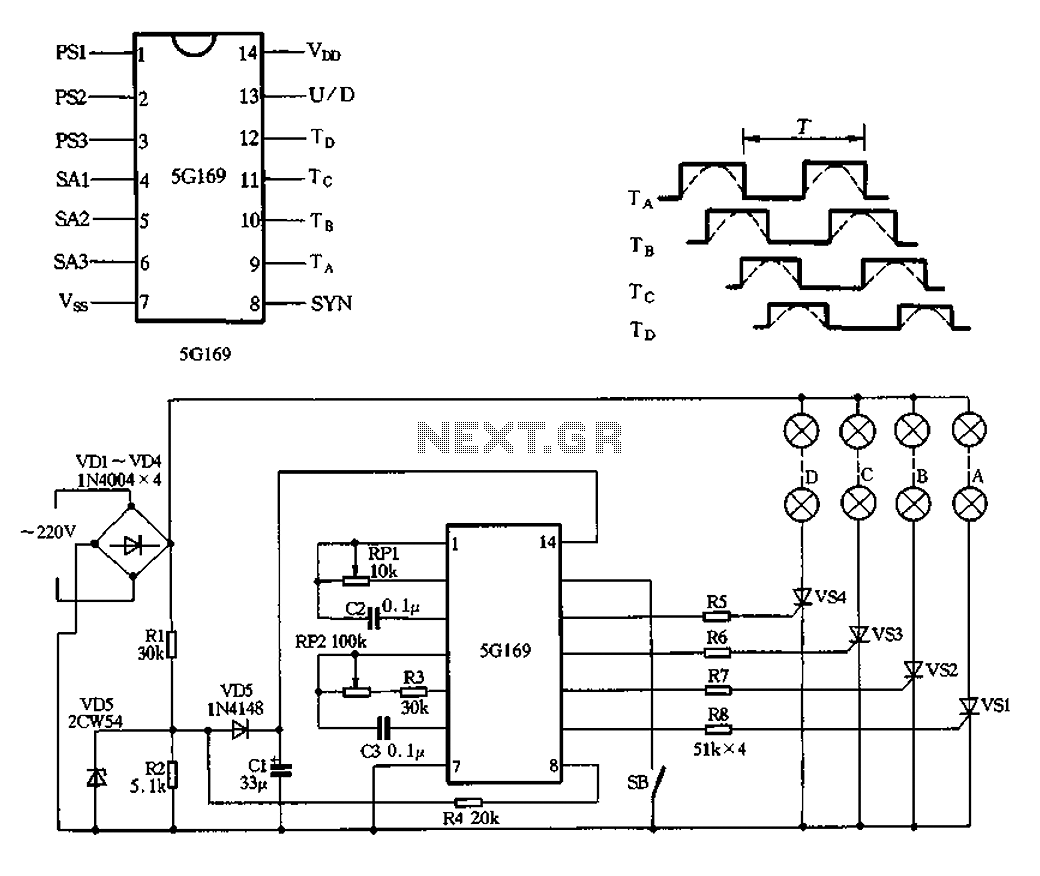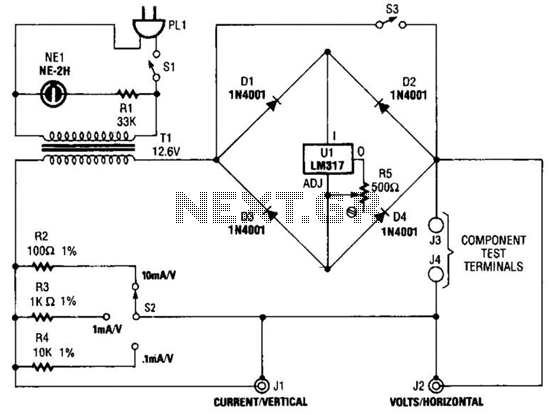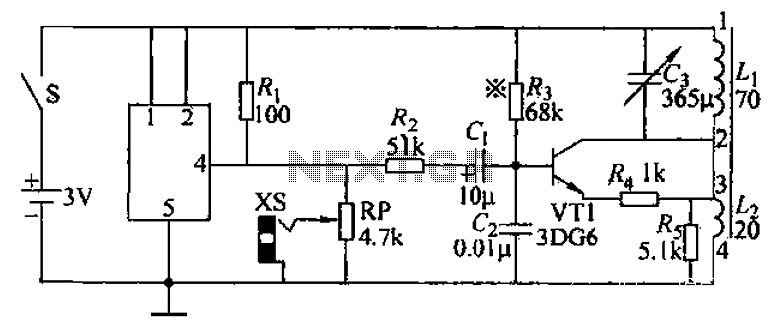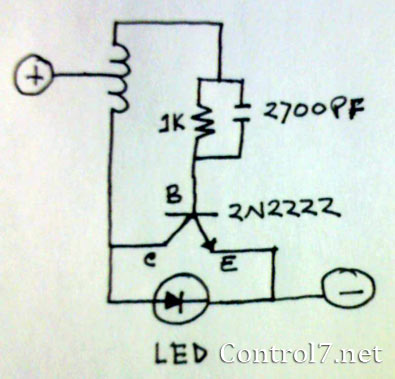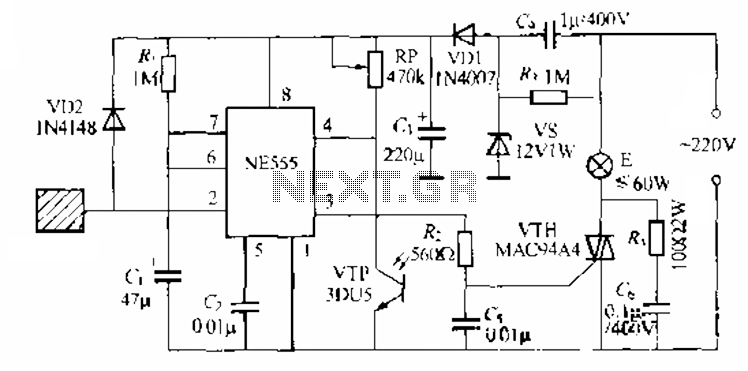
Liquid Detector Water Sensor Circuit
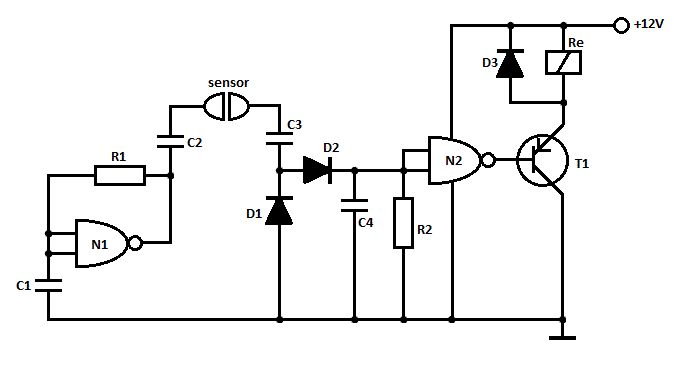
This is a straightforward liquid detector that utilizes a relay to activate an evacuation mechanism. It can be employed for water or any liquid that conducts electricity. Any PNP transistor capable of handling the relay current can be used. Refer to the new water level sensor circuit for additional information.
The liquid detector circuit operates on the principle of conductivity, where the presence of a conductive liquid completes a circuit, thereby energizing a relay. The relay serves as a switch that can control larger loads, such as an evacuation pump or alarm system, depending on the application requirements.
The basic components of the circuit include a power supply, a PNP transistor, a relay, and two electrodes that serve as the liquid detection sensors. When the electrodes are submerged in a conductive liquid, a small current flows through them, which is sufficient to turn on the PNP transistor. This, in turn, energizes the relay coil, closing the relay contacts and allowing current to flow through the connected load.
To ensure reliable operation, the circuit should be designed with appropriate biasing resistors for the PNP transistor, allowing it to operate within its safe limits. The relay must be selected based on the load requirements, ensuring it can handle the voltage and current without overheating or failing.
It is also advisable to include a diode in parallel with the relay coil to protect the transistor from back EMF generated when the relay is deactivated. This diode, often referred to as a flyback diode, will prevent voltage spikes from damaging the transistor.
For enhanced functionality, additional features such as adjustable sensitivity or a delay mechanism can be incorporated into the design. This can be achieved using additional components such as capacitors and resistors, allowing for more sophisticated liquid detection applications.
Overall, this liquid detector circuit is a practical solution for various applications where liquid presence needs to be monitored and managed effectively.This is a very simple liquid detector that use a relay to open an evacuation van. You can use it for water or any liquid that conduct electricity. Use any PNP transistor that can stand the relay current. Check out the new water level sensor circuit. 🔗 External reference
The liquid detector circuit operates on the principle of conductivity, where the presence of a conductive liquid completes a circuit, thereby energizing a relay. The relay serves as a switch that can control larger loads, such as an evacuation pump or alarm system, depending on the application requirements.
The basic components of the circuit include a power supply, a PNP transistor, a relay, and two electrodes that serve as the liquid detection sensors. When the electrodes are submerged in a conductive liquid, a small current flows through them, which is sufficient to turn on the PNP transistor. This, in turn, energizes the relay coil, closing the relay contacts and allowing current to flow through the connected load.
To ensure reliable operation, the circuit should be designed with appropriate biasing resistors for the PNP transistor, allowing it to operate within its safe limits. The relay must be selected based on the load requirements, ensuring it can handle the voltage and current without overheating or failing.
It is also advisable to include a diode in parallel with the relay coil to protect the transistor from back EMF generated when the relay is deactivated. This diode, often referred to as a flyback diode, will prevent voltage spikes from damaging the transistor.
For enhanced functionality, additional features such as adjustable sensitivity or a delay mechanism can be incorporated into the design. This can be achieved using additional components such as capacitors and resistors, allowing for more sophisticated liquid detection applications.
Overall, this liquid detector circuit is a practical solution for various applications where liquid presence needs to be monitored and managed effectively.This is a very simple liquid detector that use a relay to open an evacuation van. You can use it for water or any liquid that conduct electricity. Use any PNP transistor that can stand the relay current. Check out the new water level sensor circuit. 🔗 External reference
